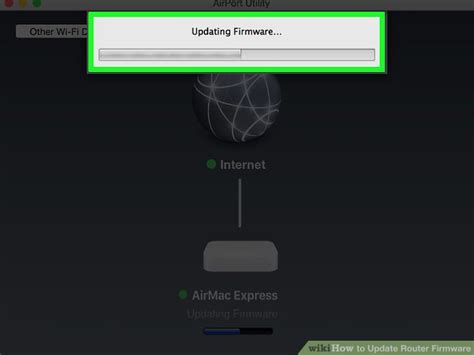What is Router Firmware?
Router firmware is the software that runs on your router, controlling its functionality and features. Most routers come with a stock firmware pre-installed by the manufacturer, which often has limited features and customization options. Third-party firmware, such as OpenWRT, dd-wrt, and tomato, are designed to replace the stock firmware and offer a range of advanced features and settings that can enhance your router’s performance and security.
OpenWRT
Overview
OpenWRT is an open-source, Linux-based firmware that offers a high level of customization and flexibility. It is designed to be lightweight and efficient, making it suitable for a wide range of routers, including those with limited hardware resources. OpenWRT is known for its extensive package repository, which allows users to install a variety of software packages to extend the functionality of their routers.
Key Features
- Extensive package repository with over 3,500 packages
- Highly customizable with a command-line interface and web-based LuCI interface
- Support for a wide range of hardware architectures and devices
- Built-in support for VPN, QoS, and advanced networking features
- Active community support and regular updates
Pros
- Highly customizable and flexible
- Extensive package repository
- Suitable for a wide range of hardware
- Active community support
Cons
- Steeper learning curve compared to other firmware
- Limited user-friendly web interface
- May require command-line knowledge for advanced configurations
DD-WRT
Overview
DD-WRT is another popular open-source firmware that offers a balance between user-friendly features and advanced customization options. It is based on Linux and is compatible with a wide range of routers. DD-WRT offers a comprehensive web interface that allows users to easily configure and manage their routers without the need for command-line knowledge.
Key Features
- User-friendly web interface for easy configuration
- Support for a wide range of router models
- Advanced features such as VPN, QoS, and bandwidth monitoring
- Built-in support for DNS caching and network storage
- Active community support and regular updates
Pros
- User-friendly web interface
- Compatible with a wide range of routers
- Advanced features and customization options
- Active community support
Cons
- May not be as lightweight as OpenWRT
- Some advanced features may require additional configuration
- Less frequent updates compared to OpenWRT

Tomato
Overview
Tomato is a lightweight, open-source firmware that focuses on simplicity and ease of use. It offers a clean and intuitive web interface that allows users to quickly configure and monitor their routers. Tomato is known for its real-time bandwidth monitoring and QoS features, which can help optimize network performance.
Key Features
- Simple and intuitive web interface
- Real-time bandwidth monitoring and QoS
- Built-in support for VPN and access control
- Lightweight and efficient, suitable for routers with limited hardware resources
- Actively maintained by the community
Pros
- Simple and user-friendly interface
- Real-time bandwidth monitoring and QOS
- Lightweight and efficient
- Actively maintained by the community
Cons
- Limited support for newer router models
- Fewer advanced features compared to OpenWRT and DD-WRT
- Smaller community and fewer available resources
Comparison Table
| Feature | OpenWRT | DD-WRT | Tomato |
|---|---|---|---|
| Customization | High | Medium | Low |
| User-friendliness | Low | Medium | High |
| Package Repository | Large | Medium | Small |
| VPN Support | Yes | Yes | Yes |
| QoS Support | Yes | Yes | Yes |
| Bandwidth Monitoring | Yes | Yes | Yes |
| Hardware Compatibility | Wide | Wide | Limited |
| Community Support | High | High | Medium |
FAQ
-
Q: Which router firmware is the most user-friendly?
A: Tomato is generally considered the most user-friendly among the three, with its simple and intuitive web interface. -
Q: Which firmware offers the most customization options?
A: OpenWRT offers the highest level of customization, with its extensive package repository and support for a wide range of hardware. -
Q: Can I install these firmware on any router?
A: Compatibility varies depending on the router model. It’s essential to check if your router is supported by the firmware before attempting to install it. -
Q: Do these firmware improve router performance?
A: Yes, third-party firmware can often improve router performance by offering advanced features like QoS, VPN support, and bandwidth monitoring. -
Q: Is it difficult to install third-party firmware on a router?
A: The difficulty level depends on your technical knowledge and the specific firmware. Generally, the installation process involves downloading the firmware, connecting to the router, and following the provided instructions. It’s crucial to follow the instructions carefully to avoid bricking your router.
Conclusion
Choosing the best router firmware depends on your specific needs and preferences. OpenWRT is ideal for advanced users who require high levels of customization and flexibility, while DD-WRT offers a balance between user-friendliness and advanced features. Tomato is perfect for those who prioritize simplicity and ease of use. Regardless of your choice, installing third-party firmware can significantly enhance your router’s performance, security, and functionality.
Before installing any firmware, ensure that your router is compatible and carefully follow the installation instructions. With the right firmware, you can unlock the full potential of your router and enjoy a better networking experience.

No responses yet